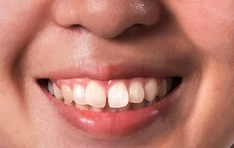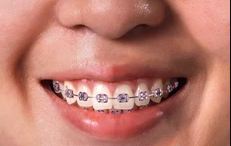.jpg)
What is the purpose of dental braces for teeth?
Dental braces, also known as teeth clip treatment, are devices designed to align or straighten teeth and guide them to the correct positions. Comprising wires, brackets, and bands, these appliances play a crucial role in correcting irregular teeth positioning, addressing jaw misalignments, enhancing chewing function, and improving the aesthetics of one's smile. Your dentist is the most qualified professional to provide guidance on treatment options and modalities tailored to your specific dentition.
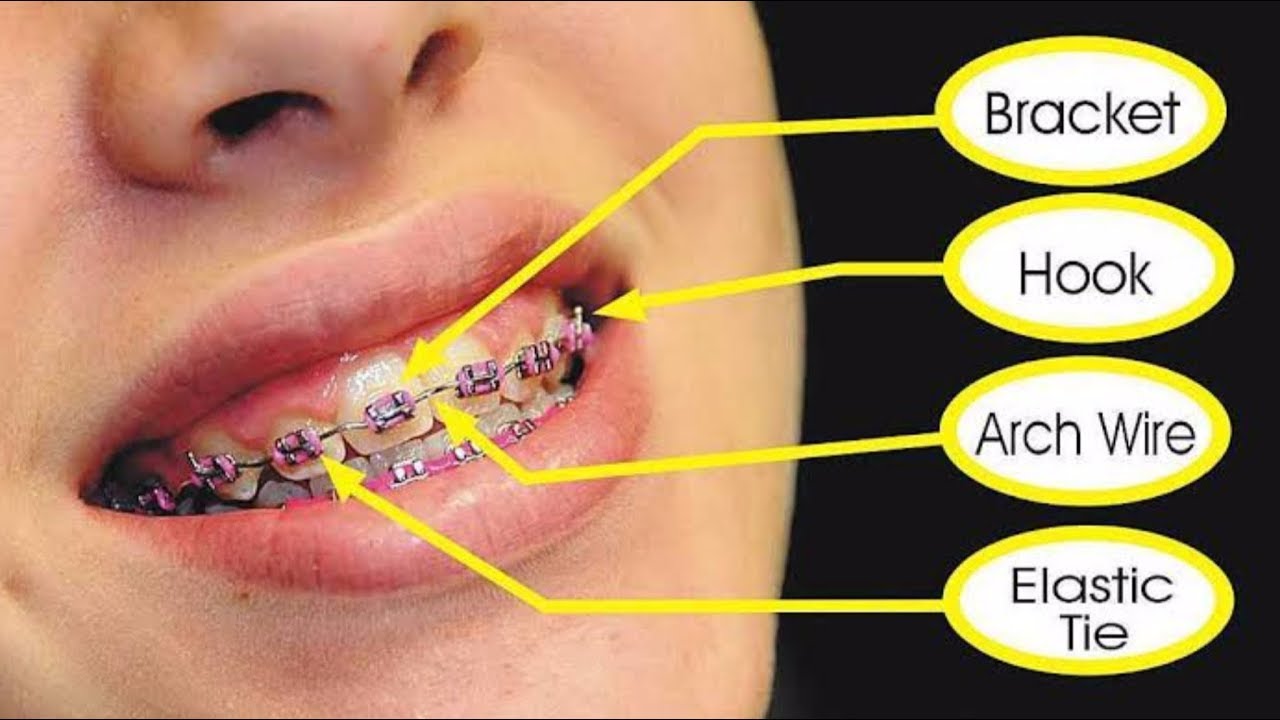

What purposes do dental or teeth braces serve?
The primary motivation behind opting for dental or teeth braces is often to enhance facial appearance. However, it's important to recognize that orthodontic treatment addresses various implications beyond cosmetic concerns, including issues like open bite, jaw structure, crossbite, and more.
What Are the Types of Braces
⦿ Metal Conventional Braces:
Traditional and widespread, these braces are now more
comfortable and smaller in
size. Elastic bands of various colors secure the wire to
the braces. The wires use
body heat for less painful and quicker teeth movement.
Suitable for patients of all
ages.
⦿ Metal Self Ligating Braces:
These metal brackets have a shutter or lock system,
eliminating the need for elastic
bands to tie the wire. More comfortable and smaller than
traditional metal braces,
they assist in arch expansion and reduce the necessity
for
extractions.
⦿ Ceramic Conventional Braces:
Clear brackets characterize ceramic braces, blending
naturally with teeth. While
less visible, they require more care due to their larger
and more brittle nature.
Preferred by older teens and adults for aesthetic
reasons,
they sometimes use
tooth-colored wires for further discreetness.
Pricing for dental/Teeth Braces And Aligners
The expenses associated with teeth braces and dental aligners are individualized and rely on factors such as teeth alignment and various other considerations. Charges for braces and aligner treatments are not standardized. During the initial appointment, the orthodontist will assess your condition, including a digital scan of your teeth, among other aspects. Using this information, they can provide you with a precise cost estimate for the braces and aligners, as well as an estimate of the treatment duration.
FREQUENTLY ASKED QUESTIONS
Can I eat anything with aligners?
Aligners are removed for eating, allowing you to enjoy all your favorite foods without restrictions.
How often do I need to wear aligners?
Aligners should be worn for 20-22 hours per day, and they are changed every 1-2 weeks as the teeth move.
Do braces hurt?
Discomfort is common initially and during adjustments, but it is usually manageable. Over-the-counter pain relievers can help.
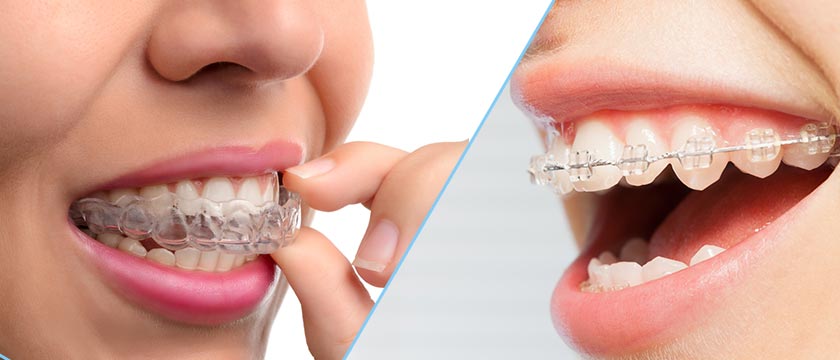
Comprehensive Overview of Orthodontic Treatments
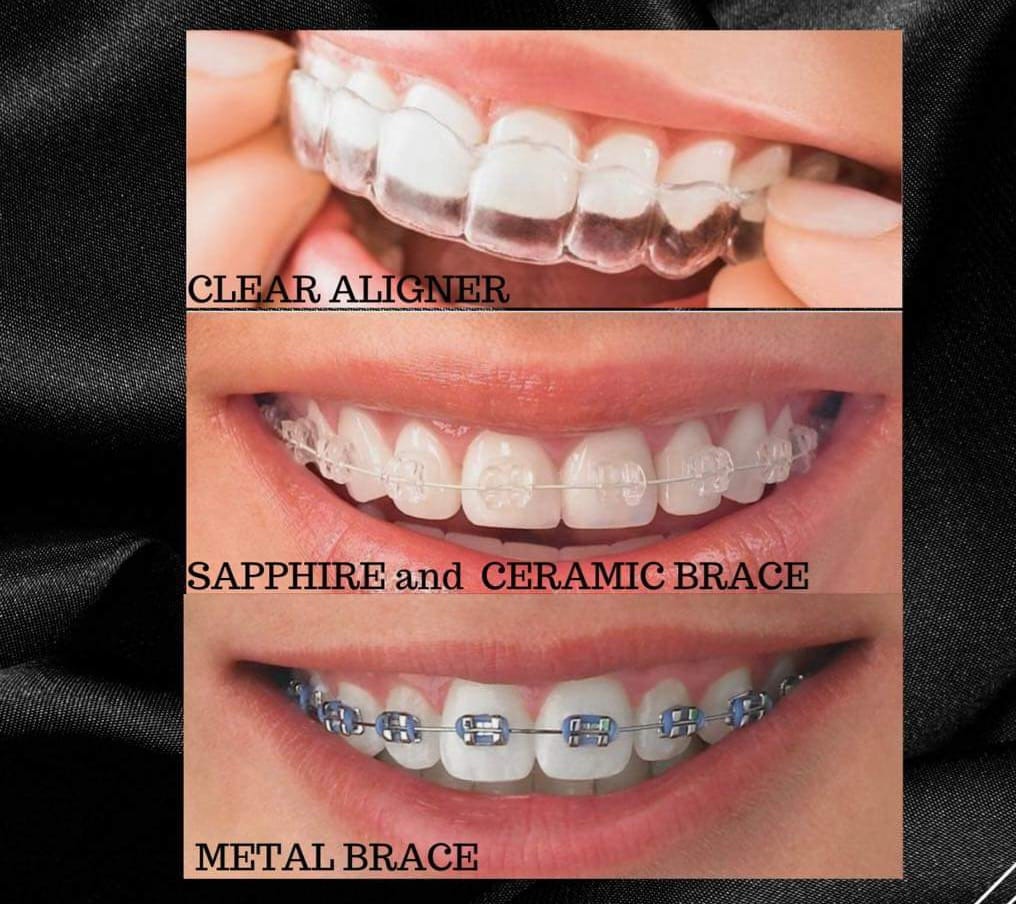
Clear aligners, such as Invisalign, are transparent, removable trays that gradually straighten teeth over time.
They are custom-made for each patient and are virtually invisible when worn.
Clear aligners are popular for their aesthetic appeal and the ability to remove them for eating and oral hygiene.
Sapphire Braces:
Sapphire braces are similar to traditional braces but use clear or tooth-colored brackets instead of metal
They are a more discreet option compared to metal braces and can be an attractive choice for those who want a less noticeable orthodontic treatment. Ceramic Braces:
Ceramic braces have brackets that are made of tooth-colored or clear materials, making them less visible than traditional metal braces.
They function similarly to metal braces, using wires and brackets to straighten teeth. Ceramic braces are a popular choice for individuals who want a more discreet option without opting for clear aligners
Metal Braces:
Traditional metal braces consist of metal brackets and wires to correct tooth misalignment. They are a durable and effective orthodontic treatment that has been used for many years.
Advances in design have made modern metal braces more comfortable and less conspicuous than earlier versions.
Before & After Picture Gallery
Metal Braces Treatment
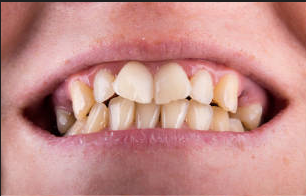
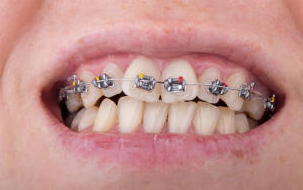
Self-Ligating Braces Treatment
